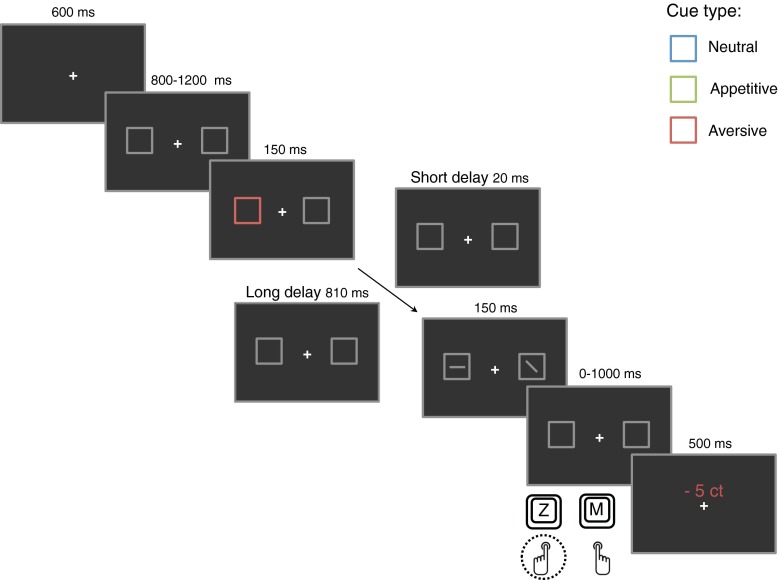Fig. 1.
Schematic representation of the task. There was a blank 600 ms intertrial-interval. The trial started with a random 800-ms to 1,200-ms interval during which the target boxes were presented. A brief (150 ms) colored flash of the outline of one of the boxes served as the exogenous abrupt-onset cue. Half of the trials were followed by a short, 20-ms delay (above the arrow) and half by a long, 810-ms, delay (below the arrow). The target line (horizontal or vertical) and the distractor line (diagonal) were presented for 150 ms. Participants had a 1,000 ms response window to press the “Z” or “M” keyboard button. Feedback was presented for 500 ms. In the example, a valid aversive abrupt-onset cue trial is shown

